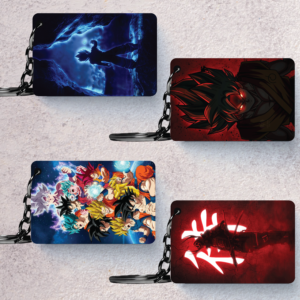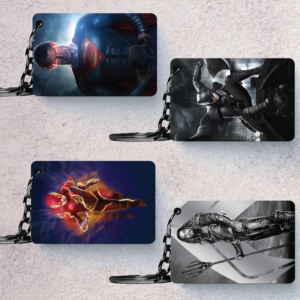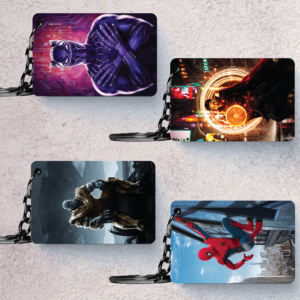Indian wedding cinematography has evolved into an art form that captures the grandeur, emotions, and intricate details of one of the most significant events in Indian culture. As these celebrations blend traditional rituals with contemporary flair, the demand for cinematic storytelling that reflects the vibrant colors, dynamic energy, and heartfelt moments has surged. This guide delves into the latest trends shaping Indian wedding cinematography, from the use of drones and cinematic techniques to personalized storytelling approaches. It also offers practical tips for cinematographers to create stunning visual narratives that honor the rich heritage and modern aspirations of Indian weddings.
The Basics of Indian Wedding Cinematography
Definition and Scope
Indian wedding cinematography goes beyond mere videography. It’s about crafting a story that encapsulates the essence of the wedding. From the intricate details of the bridal jewelry to the grandiosity of the mandap, every element is recorded to tell a story.
Essential Equipment
A high-quality camera is just the beginning. Professional cinematographers use drones for aerial shots, gimbals for smooth movements, and high-definition microphones to capture clear sound. The right equipment can make a significant difference in the quality of the footage.
Popular Cinematography Styles
Traditional Cinematography
This style focuses on capturing the events as they happen, with minimal editing. It’s perfect for couples who want a straightforward documentation of their wedding.
Documentary Style
Incorporating interviews and behind-the-scenes footage, this style tells the story of the wedding from the perspectives of the bride, groom, and their families. It’s more personal and engaging.
Cinematic Style
Inspired by movies, this style uses creative angles, dramatic lighting, and advanced editing techniques to produce a visually stunning video. It’s all about creating a dreamy, fairy-tale-like representation of the wedding.
Vintage Style
Using filters and editing techniques that give a retro look, this style adds a nostalgic touch to the wedding video. It’s ideal for couples who want their video to have a timeless feel.
Emerging Trends in Indian Wedding Cinematography
Drone Shots
Drones have revolutionized wedding cinematography, offering breathtaking aerial views of the venue and the proceedings. They add a cinematic flair that’s hard to achieve otherwise.
Slow Motion Videos
Slow-motion shots are perfect for capturing emotional moments like the bride’s entrance or the first dance. They add a dramatic effect, making these moments even more memorable.
Same-Day Edits
For couples who want to relive the day’s highlights during the reception, same-day edits are a fantastic option. It requires quick turnaround and skillful editing but provides an immediate keepsake.
Highlight Reels
A short video that encapsulates the best moments of the wedding day. It’s shareable and perfect for social media, allowing friends and family to get a glimpse of the event.
Pre-Wedding Shoots
Concept and Importance
Pre-wedding shoots are all about showcasing the couple’s journey before they tie the knot. These shoots are often more relaxed and allow for creative expression.
Popular Locations
From picturesque beaches to historic palaces, choosing a unique location adds a special touch to the pre-wedding shoot. The location sets the tone and enhances the visual appeal.
Creative Ideas
Incorporate themes that reflect the couple’s interests or love story. Whether it’s a Bollywood-inspired shoot or a simple, candid session in a park, creativity is key.
Key Moments to Capture
The Baraat
The groom’s procession is a lively and colorful affair, filled with music, dancing, and joyous celebrations. It’s a must-capture moment that sets the tone for the wedding.
The Wedding Ceremony
From the exchange of vows to the sacred rituals, capturing the ceremony in its entirety is crucial. Each ritual has its significance and should be documented with attention to detail.
Reception Highlights
The reception is where the celebration continues with speeches, dances, and performances. Capturing these moments adds a complete narrative to the wedding story.
Candid Moments
Some of the best shots are unplanned. Capturing the natural, spontaneous interactions between the couple and their guests often results in the most heartfelt footage.
Technical Tips for Stunning Shots
Lighting Techniques
Good lighting is essential for high-quality video. Use natural light where possible, and supplement with artificial lights to ensure clarity and depth in the footage.
Camera Angles
Experiment with different angles to add variety to the shots. Low angles, high angles, and wide shots all contribute to a dynamic and visually interesting video.
Framing and Composition
Follow the rule of thirds and other composition techniques to create balanced and aesthetically pleasing shots. Pay attention to the background and foreground elements.
Sound Recording Tips
Clear audio is just as important as clear visuals. Use external microphones and audio recorders to capture vows, speeches, and ambient sounds effectively.
Editing Techniques
Color Grading
Enhancing the colors can transform the footage, making it more vibrant and appealing. Color grading helps in setting the mood and tone of the video.
Transitions
Smooth transitions between scenes keep the video flowing and maintain the viewer’s interest. Avoid jarring cuts and opt for seamless, elegant transitions.
Music and Sound Effects
Choosing the right music is crucial. It should complement the visuals and enhance the emotional impact. Sound effects can add realism and depth to the footage.
Storytelling through Editing
Editing is where the story truly comes together. Combine the best moments, add narrative elements, and ensure the video tells a cohesive, engaging story.
The Role of Technology
High-Definition Cameras
HD and 4K cameras provide the clarity and detail needed for professional-quality wedding videos. They ensure every moment is captured in stunning detail.
Use of Gimbals and Stabilizers
These tools help in achieving smooth, steady shots, eliminating the shakiness that can distract from the footage.
Virtual Reality (VR) in Wedding Cinematography
VR is an emerging trend that allows couples to experience their wedding day in an immersive, 360-degree view. It’s like reliving the day from multiple perspectives.
Cultural Sensitivity and Understanding Traditions
Importance of Knowing the Rituals
Indian weddings are rich in tradition, with each ritual holding significant meaning. Understanding these rituals ensures they are captured respectfully and accurately.
Respecting Cultural Nuances
Every community has its customs and traditions. Being aware of these and showing respect through your work is crucial in creating a culturally sensitive wedding video.
Selecting the Right Cinematographer
What to Look for in a Professional
Experience, portfolio, and reviews are key factors to consider. Look for someone who understands your vision and has the technical skills to bring it to life.
Questions to Ask Before Hiring
Discuss their style, equipment, availability, and pricing. Ask about their experience with Indian weddings specifically, as these can be quite different from other types of weddings.
Working with a Wedding Cinematographer
Planning and Coordination
Good planning ensures that everything runs smoothly on the day. Discuss the schedule, key moments, and any specific shots you want.
Communicating Your Vision
Share your ideas and preferences with your cinematographer. Clear communication helps in aligning their work with your expectations.
Reviewing the Contract
Ensure all details are covered in the contract, including deliverables, timelines, and costs. This avoids any misunderstandings later on.
Cost of Indian Wedding Cinematography
Factors Affecting Cost
The cost can vary based on factors like the length of coverage, the number of videographers, equipment used, and editing requirements.
Budgeting Tips
Set a realistic budget and prioritize what’s most important to you. Consider the value of capturing your memories and allocate your budget accordingly.
Client Testimonials and Reviews
Importance of Feedback
Feedback helps cinematographers improve their services and provides potential clients with insights into their work.
How to Use Testimonials
Share your experiences and reviews to assist others in making informed decisions. Positive testimonials can also be a great way to show appreciation for your cinematographer’s work.
Conclusion
In conclusion, Indian wedding cinematography has evolved into a vibrant and dynamic art form, reflecting the rich cultural tapestry and modern trends of contemporary weddings. Embracing a blend of traditional customs and innovative techniques, today’s wedding cinematographers are using cutting-edge technology and creative storytelling to capture the essence of these joyous celebrations. From drone shots and cinematic edits to personalized storytelling and live streaming, the field is continually adapting to meet the diverse preferences of couples. By staying abreast of the latest trends and incorporating thoughtful tips, cinematographers can create timeless, captivating films that honor the unique beauty and emotional depth of Indian weddings.









